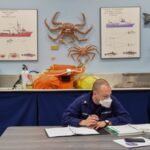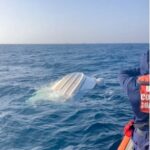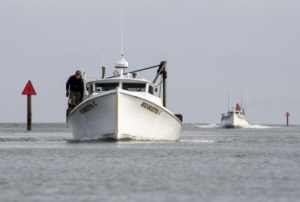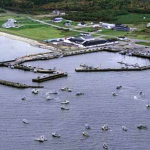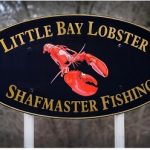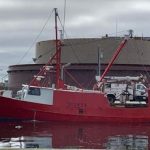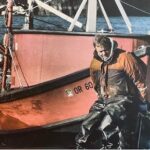Monthly Archives: July 2017
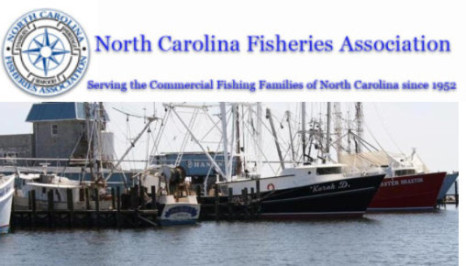
North Carolina Fisheries Association Weekly Update for July 28, 2017
Click here to read the Weekly Update, to read all the updates, Click here 16:41
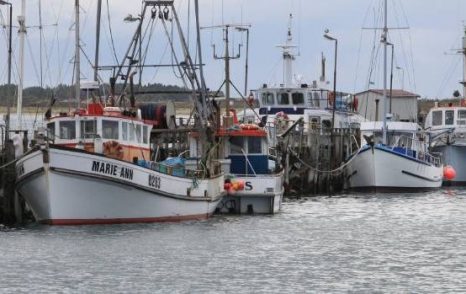
Letter: Government fishing vessel monitoring plans are demanding rubbish
I see Nathan Guy is claiming the new electronic system for monitoring fishing vessels is the biggest change since the introduction of the commercial fishing quota system. I believe he has no knowledge of the history of his portfolio. Instead of writing paper reports we will do them electronically. Whoopee. Someone needs to tell him that this is being done in some form or another on most boats, along with AIS tracking on most company boats, although MPI probably doesn’t have access to a lot of it. It is only the smaller boats, that have the least impact, that don’t – as most can’t afford it. We already work under the most onerous system in New Zealand and probably the world. The extra detail being included is ridiculous and in some cases unworkable on a small boat. click here to read the letter 15:39

Why are whales dying in the Gulf of St. Lawrence? What it means for fisheries and the future
It was about four years ago when the sightings first began. In the beginning, just a few fishermen reported seeing large black whales in the Gulf of St. Lawrence, in areas clustered off the coast of Cape Breton Island. With each summer came more sightings. One was seen off the north coast of PEI. Another off of Pleasant Bay at Cape Breton Highlands National Park. A couple off of Southside Antigonish Harbour. Soon, the reports were in the dozens. The sightings were initially treated as a passing curiosity. The North Atlantic right whale, a rare and endangered species distinguished by patches of roughened white skin, had been seen off the coast of the Gaspé in Quebec before – though few could recall ever seeing them in this part of the gulf. But then came the deaths. That’s when everyone started paying attention – especially the fishermen. click here to read the story 14:47
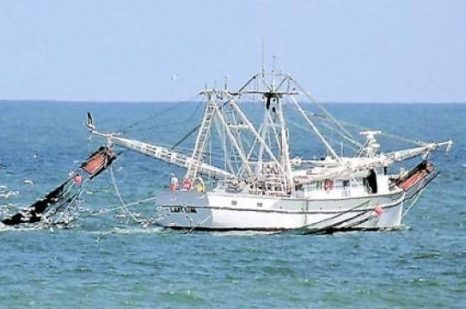
That trawler wasn’t harvesting shrimp
It’s not often that beachgoers see a shrimp trawler skirting the beaches less than a mile offshore and in broad daylight. That’s what happened last week along the Anastasia Island coastline as a 75-foot trawler made its way north and meandered close to shore, attracting the attention of vacationers. As it turned out, the well-equipped “Lady Lisa” wasn’t shrimping at all. She is one of four research vessels maintained by the South Carolina Department of Natural Resources. The vessel is the primary sampling platform for several state and federal projects. It works near coastal waters between Cape Hatteras, North Carolina, and Cape Canaveral, Florida. A vessel with a storied past! click here to read the story 14:21
FISH-NL: Fisheries and Oceans Minister Dominic LeBlanc missing boat on problems plaguing industry
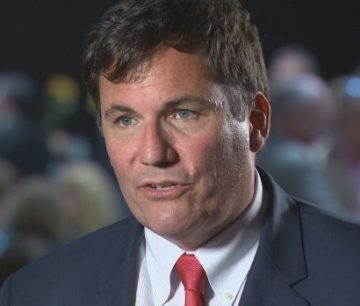 The Federation of Independent Sea Harvesters of Newfoundland and Labrador (FISH-NL) is outraged with an attack by the federal Minister of Fisheries and Oceans on the province’s inshore harvesters. “Dominic LeBlanc has said straight out he wants to devalue fishing licences when the only thing most inshore harvesters have to retire on is the sale of their license,” says Ryan Cleary, President of FISH-NL. “It’s not like there’s an FFAW pension plan.” “LeBlanc also appears out to end the ability of inshore harvesters to pass on licences to their children, a tradition that’s gone on for hundreds of years and critical to the future or the inshore fishery.” click here to read the press release 13:10
The Federation of Independent Sea Harvesters of Newfoundland and Labrador (FISH-NL) is outraged with an attack by the federal Minister of Fisheries and Oceans on the province’s inshore harvesters. “Dominic LeBlanc has said straight out he wants to devalue fishing licences when the only thing most inshore harvesters have to retire on is the sale of their license,” says Ryan Cleary, President of FISH-NL. “It’s not like there’s an FFAW pension plan.” “LeBlanc also appears out to end the ability of inshore harvesters to pass on licences to their children, a tradition that’s gone on for hundreds of years and critical to the future or the inshore fishery.” click here to read the press release 13:10
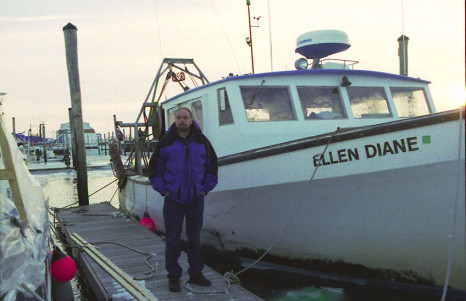
New Hampshire fleet dwindles as at-sea monitoring decision heads to Supreme Court
A New Hampshire fisherman leading the fight against a decision by the National Oceanic and Atmospheric Association to shift the cost of at-sea monitoring to industry has appealed the case to the U.S. Supreme Court. David Goethel of Hampton, New Hampshire, said he filed the appeal in early July. He is challenging the decision of a federal district court and the 1st U.S. Circuit Court of Appeals, which ruled in NOAA’s favor, according to the Associated Press. Goethal, who filed his original suit in December 2015, has been joined in his appeal by the Northeast Fishery Sector 13, which represents fishermen from Massachusetts to North Carolina. His legal support is being provided pro bono by the Cause for Action Institute.,, In Goethel’s appeal to the Supreme Court, he argues that NOAA’s requirement of at-sea monitors represents an illegal, warrantless search of private property, and that forcing the industry to pay for its own monitoring represents a violation of the Constitution’s Commerce Clause. click here to read the story 10:51
Senators and Congressmen – Problems that are facing the commercial fishermen today need your immediate attention
 To whom it may Concern: I am retired fisherman out of Gloucester, MA. I would appreciate if our Senators, Congressmen and anyone in office would help us. I am listing some of the problems that are facing the commercial fishermen today and need your immediate attention and help. Most of these problems can only be resolved at the Federal Level. 1. The Magnusson Act needs to be updated. The wording needs to be changed so that the Courts and NOAA will have to consider and accept other scientific data.2. The Saltonstall Kennedy (SK) Act. Enacted in 1954.,,, click here to read the letter 10:11
To whom it may Concern: I am retired fisherman out of Gloucester, MA. I would appreciate if our Senators, Congressmen and anyone in office would help us. I am listing some of the problems that are facing the commercial fishermen today and need your immediate attention and help. Most of these problems can only be resolved at the Federal Level. 1. The Magnusson Act needs to be updated. The wording needs to be changed so that the Courts and NOAA will have to consider and accept other scientific data.2. The Saltonstall Kennedy (SK) Act. Enacted in 1954.,,, click here to read the letter 10:11
Fisheries licensing process for Inshore Fishermen has to be fair: minister
 One of the concerns for the future of the inshore fishery in this province is how difficult it can be for potential new entrants to obtain fishing licences and financial backing for vessels and gear. The issue was addressed by federal Fisheries Minister Dominic LeBlanc in a speech to the Canadian Independent Fish Harvesters Federation in Nova Scotia on Tuesday. LeBlanc said he wants to make the licensing process for inshore fishermen fairer, and is looking for their input into how best to do it. “Fishing licences have become over-valued in recent years,” the minister said. “This makes it extremely difficult for young fishermen to access the fishery, and more often than not prevents new entrants altogether.,, click here to read the story 09:46
One of the concerns for the future of the inshore fishery in this province is how difficult it can be for potential new entrants to obtain fishing licences and financial backing for vessels and gear. The issue was addressed by federal Fisheries Minister Dominic LeBlanc in a speech to the Canadian Independent Fish Harvesters Federation in Nova Scotia on Tuesday. LeBlanc said he wants to make the licensing process for inshore fishermen fairer, and is looking for their input into how best to do it. “Fishing licences have become over-valued in recent years,” the minister said. “This makes it extremely difficult for young fishermen to access the fishery, and more often than not prevents new entrants altogether.,, click here to read the story 09:46
New Bedford launches seafood branding campaign and website
 For generations New Bedford fishermen withstood the elements to do their jobs. Through rain storms they fished. In choppy waters they fished. Against harsh winds they fished. So it was fitting that the unveiling of the city’s newly-created seafood brand was delivered in the rain at the Custom House Square in downtown New Bedford Thursday evening. “We are the biggest, the baddest, the most comprehensive fishing port in America,” Mayor Jon Mitchell said. “We are going to scream from the mountain tops that we are the biggest fishing port in America. We are a real seaport and real fishing port. We want everyone to know that.” click here to read the story, click here to visit www.NewBedfordSeafood.org 09:31
For generations New Bedford fishermen withstood the elements to do their jobs. Through rain storms they fished. In choppy waters they fished. Against harsh winds they fished. So it was fitting that the unveiling of the city’s newly-created seafood brand was delivered in the rain at the Custom House Square in downtown New Bedford Thursday evening. “We are the biggest, the baddest, the most comprehensive fishing port in America,” Mayor Jon Mitchell said. “We are going to scream from the mountain tops that we are the biggest fishing port in America. We are a real seaport and real fishing port. We want everyone to know that.” click here to read the story, click here to visit www.NewBedfordSeafood.org 09:31

Coast Guard responds to sunken vessel off Grays Harbor, Wash.
Coast Guard personnel responded to a 42-foot commercial fishing vessel after it sank while moored in the Hoquiam River off Grays Harbor, Washington, Wednesday. Global Diving and Salvage personnel placed containment boom around the sunken vessel Wednesday night and removed an estimated 200 gallons of marine diesel from the fuel tanks Thursday morning. Watchstanders at sector received a report at 3:40 p.m. from Hoquiam Police Department personnel that the vessel Perwyn, with a max potential of 800 gallons of diesel aboard, had sunk and there was a sheen on the surrounding water. Members from the Coast Guard Sector Columbia River Incident Management Division opened the Oil Spill Liability Trust Fund for up to $50,000 and contracted Global Diving and Salvage marine casualty responders for cleanup purposes. Absorbent boom has been left in place and members of the Washington Department of Ecology will continue to monitor the site. –USCG– 19:19
Carlos “The Codfather” Rafael sentencing delayed
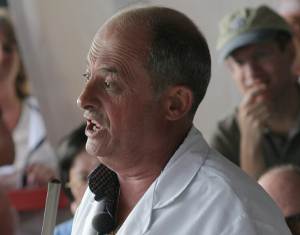 The New Bedford fishing mogul known as “The Codfather” has been granted a new two-month delay prior to his sentencing on federal charges of conspiracy, falsifying fish quotas, and tax evasion. Carlos Rafael, 65, was slated to face sentencing Friday, and could face up to 76 months in prison on the three charges through plea agreement reached with the U.S. attorney’s office March 30. Federal prosecutors have recommended a prison term of 46 months and an extended time after that of supervised release, but U.S. District Court Judge William G. Young is not bound to abide by that recommendation. All of those terms are far less than the 20 years he could have faced under an original 27-count indictment. Young, however, granted a motion on July 11 that had been filed by Rafael’s attorney, William H. Kettlewell, asking for more time to resolve what Kettlewell called “a critical component of the overall resolution of this case.” Young and the U.S. attorney’s office agreed to set a new sentencing date for Sept. 25 at 2 p.m., according to spokeswoman Liz McCarthy. click here to read the story 16:50
The New Bedford fishing mogul known as “The Codfather” has been granted a new two-month delay prior to his sentencing on federal charges of conspiracy, falsifying fish quotas, and tax evasion. Carlos Rafael, 65, was slated to face sentencing Friday, and could face up to 76 months in prison on the three charges through plea agreement reached with the U.S. attorney’s office March 30. Federal prosecutors have recommended a prison term of 46 months and an extended time after that of supervised release, but U.S. District Court Judge William G. Young is not bound to abide by that recommendation. All of those terms are far less than the 20 years he could have faced under an original 27-count indictment. Young, however, granted a motion on July 11 that had been filed by Rafael’s attorney, William H. Kettlewell, asking for more time to resolve what Kettlewell called “a critical component of the overall resolution of this case.” Young and the U.S. attorney’s office agreed to set a new sentencing date for Sept. 25 at 2 p.m., according to spokeswoman Liz McCarthy. click here to read the story 16:50
Alaskan Commercial Fishing Couple Charged with Willful Failure to Pay Over $400,000 in Income Taxes on Income Earned for 13 Years
 An Alaskan couple was charged in federal court in Juneau, Alaska today with four counts of willful failure to pay their individual income taxes, announced Acting Deputy Assistant Attorney General Stuart M. Goldberg and Acting U.S. Attorney Bryan Schroder for the District of Alaska. According to the Information, Archie W. Demmert III and Roseann L. Demmert earned income from commercial fishing. The Information alleges that Archie Demmert owned Vetta Bay LLC, which owned the Demmerts’ fishing vessel, the Emerald Beauty. click here to read the press release 15:09
An Alaskan couple was charged in federal court in Juneau, Alaska today with four counts of willful failure to pay their individual income taxes, announced Acting Deputy Assistant Attorney General Stuart M. Goldberg and Acting U.S. Attorney Bryan Schroder for the District of Alaska. According to the Information, Archie W. Demmert III and Roseann L. Demmert earned income from commercial fishing. The Information alleges that Archie Demmert owned Vetta Bay LLC, which owned the Demmerts’ fishing vessel, the Emerald Beauty. click here to read the press release 15:09
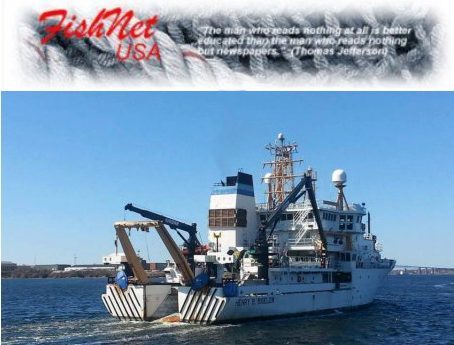
Trawl Surveys, what are they good for? – Nils E. Stolpe/FishNet USA
(Note that I am only addressing the NOAA/NMFS reliance on bottom trawl survey data in finfish stock assessments. I am not questioning the value of the wealth of biological and physical data that this long – running series of surveys generate.) From the article: According to NOAA/NMFS these surveys have provided and continue to provide “the primary scientific data” for fisheries assessments from North Carolina to Maine (fisheries assessments are the periodic – generally held every 3 to 5 years – scientific/bureaucratic exercises. In NOAA’s words “NOAA Fisheries’ scientific stock assessments are critical to modern fisheries management. Using data gathered from commercial and recreational fishermen and our own on-the-water scientific observations, a stock assessment describes the past and current status of a fish population or stock, answers questions about the size of the stock, and makes predictions about how a fishery will respond to current and future management measures.”) click here to read the article 12:35

Changes in Lobster Land
“Thick as pudding out here,” says Richard Waldron, 77, taking his glasses off and tucking them in the folds of a red plaid shirt sitting on top of a lobster crate in the stern of his 16-foot skiff. He’s pretty disgusted. This morning he was distracted and forgot his coffee thermos. He opens up the throttle on the outboard and we pick up speed, the rockweed ledges and gray cabin on Flag Island fading into soft focus and then gone as the fog settles like a soggy towel over the Muscle Ridge Channel. A weathered granite shelf as broad as a whale comes up fast. Waldron whips the skiff around it, barely slowing, then we are back scooting through timeless, gauzey fog. This is about as simple as lobstering gets: an open fiberglass skiff with an outboard. click here to read the story 11:37
Trump administration steps in on fishing limits, and the implications could ripple
 “The commission is deeply concerned about the near-term impact on our ability to end overfishing on the summer flounder stock as well as the longer-term ability for the commission to effectively conserve numerous other Atlantic coastal shared resources,” Douglas Grout, the commission’s chair, said in a statement. “New Jersey makes a compelling argument that the measures it implemented this year, despite increasing catch above the harvest target, will likely reduce total summer flounder mortality in New Jersey waters to a level consistent with the overall conservation objective,” Chris Oliver, assistant administrator of fisheries at NOAA, wrote the commission in a letter on behalf of Ross. The move infuriated commissioners and fishing officials throughout the area, as well as the region’s NOAA officials. “Ross was brilliant in his decision,” said Jim Donofrio, executive director of the Recreational Fishing Alliance in New Jersey, which represents thousands of recreational fishermen across the country. “The Trump administration has challenged a broken fishery management system in this country, and I applaud them for doing it.” click here to read the story 10:10
“The commission is deeply concerned about the near-term impact on our ability to end overfishing on the summer flounder stock as well as the longer-term ability for the commission to effectively conserve numerous other Atlantic coastal shared resources,” Douglas Grout, the commission’s chair, said in a statement. “New Jersey makes a compelling argument that the measures it implemented this year, despite increasing catch above the harvest target, will likely reduce total summer flounder mortality in New Jersey waters to a level consistent with the overall conservation objective,” Chris Oliver, assistant administrator of fisheries at NOAA, wrote the commission in a letter on behalf of Ross. The move infuriated commissioners and fishing officials throughout the area, as well as the region’s NOAA officials. “Ross was brilliant in his decision,” said Jim Donofrio, executive director of the Recreational Fishing Alliance in New Jersey, which represents thousands of recreational fishermen across the country. “The Trump administration has challenged a broken fishery management system in this country, and I applaud them for doing it.” click here to read the story 10:10
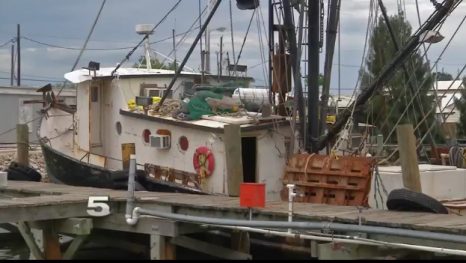
Valley Shrimping Industry Struggles While Waiting for Visas
A Brownsville shrimp boat owner said he’s losing thousands of dollars every day in the industry. Carlton Reyes is in his 48th shrimping season. Every year, he said he searches for workers to bring in what often adds up to thousands of pounds of shrimp daily. Now, he is waiting for a group of Mexican workers he has had for years. The White House administration held up the H2B visas until last week. Reyes said it’s a difficult job and having to rely on inexperienced workers can be a problem. “I had a boat at the dock this morning that came in because the two guys we took out as deckhands quit,” he said. “So now we’re trying to find someone to go back out.” video, click here to read the story 09:44
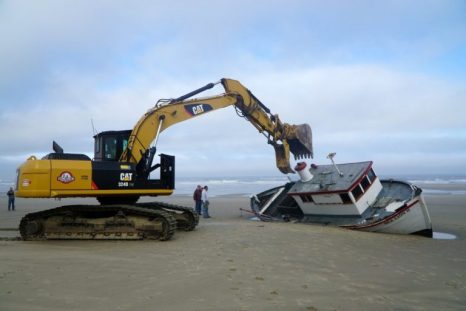
F/V Sea Lion II meets its doom on the Bayshore….
The Sea Lion II’s owner-hired-captain indicated that he fell asleep and woke up too late to stop the grounding of the fishing vessel. The Sea Lion II was built in Japan back in the 1960s but spent much of its fishing life working the west coast of the U.S. It’s last load of salmon was off-loaded and hauled to Newport – it’s engine was also reportedly salvaged. (Includes an info update from photo-journalist Kerry Terrel) click here to see the photo’s 09:17

Cape Pond Ice property sold
The property that has for decades housed one of Gloucester’s iconic waterfront businesses is under new ownership. But the sale agreement for the Commercial Street property that has been home to Cape Pond Ice and its predecessors since 1848 will allow the business and its owner, Scott Memhard, to continue to operate and supply ice to Gloucester’s diminished fishing fleet. Cape Pond Realty Trust — headed by Richard W. Kohn, an accountant and real estate investor who has homes in Gloucester and Winchester — acquired the land and buildings at 104 and 106A Commercial St., according to a deal finalized late Tuesday and announced on behalf of Memhard by local attorney Meredith Fine. click here to read the story 08:08

Marine Accident Investigation Branch – Fishermen ‘worked to exhaustion’ before death in sinking
Martin Johnstone, Christopher Morrison and Paul Alliston died when the Louise went down in the Outer Hebrides in April last year. The Marine Accident Investigation Branch (MAIB) found a series of mistakes contributed to the sinking of the boat, while the emergency response was delayed by almost an hour. The Louisa’s four-man crew were asleep when the creel boat began taking on water at anchor off Mingulay. They had worked 20-hour shifts for four days before the sinking, sleeping between stringing creels and eating snacks as they went. An alarm intended to warn them about flooding had been disabled and they did not wake up until the Louisa was already sinking rapidly. The men abandoned the boat but were unable to inflate their faulty life raft. click here to read the story 20:56

Simrad Commercial And Patti Marine Enterprises Partner on New Clamming Vessel Bridge
Simrad Commercial, in partnership with Patti Marine Enterprises, announced today the latest vessel commissioned for the Truex clamming fleet is outfitted with a complete suite of Simrad Commercial marine electronics. SEAWATCHER II, a 152-foot clamming vessel, features two Simrad NSO evo2 processors driving five 18.5-inch monitors, an AP70 Autopilot, Halo-4 and Halo-6 Pulse Compression Radar systems and two SonarHub™ sonar processing systems. The design of the SEAWATCHER II is based on an original concept developed in partnership with the Truex family in 2003. The original namesake, the 134-foot SEAWATCHER I, was the first aft house clam vessel with integrated and stylized stacks. click here to read the story 18:33
Police lay charge stemming from April protest at DFO headquarters; FISH-NL says authorities setting bad precedent
 The Federation of Independent Sea Harvesters of Newfoundland and Labrador (FISH-NL) is shocked to learn a charge has been laid against an inshore harvester from La Scie involved in an April demonstration at the St. John’s headquarters of the federal Department of Fisheries and Oceans. “Inshore harvesters have been driven to the point of protest by direct threats to their livelihoods,” says Ryan Cleary, President of FISH-NL. “They should not be charged, especially after police said they wouldn’t be.” “But like the promise made by federal Fisheries and Oceans Minister Dominic LeBlanc that he would meet with hunger striker Richard Gillett, words these days appear to mean nothing.” click here to read the press release 16:16
The Federation of Independent Sea Harvesters of Newfoundland and Labrador (FISH-NL) is shocked to learn a charge has been laid against an inshore harvester from La Scie involved in an April demonstration at the St. John’s headquarters of the federal Department of Fisheries and Oceans. “Inshore harvesters have been driven to the point of protest by direct threats to their livelihoods,” says Ryan Cleary, President of FISH-NL. “They should not be charged, especially after police said they wouldn’t be.” “But like the promise made by federal Fisheries and Oceans Minister Dominic LeBlanc that he would meet with hunger striker Richard Gillett, words these days appear to mean nothing.” click here to read the press release 16:16
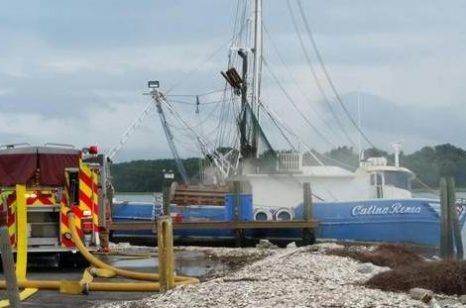
Hilton Head Island shrimp boat catches fire
Hilton Head Island Fire and Rescue firefighters were kept busy Tuesday by a shrimp boat that caught fire behind Hudson’s Seafood Restaurant. The boat took on water and leaked fuel into the waterway, fire departament spokeswoman Joheida Fister said. The fire was reported around 6:30 a.m. and firefighters arrived to find a fire in the boat’s engine room, Fister said. Flames damaged the engine room and much of the shrimp hold area in the boat, which was docked behind the restaurant. More images, click here to read the story 14:20
TSB recommends mandatory safety measures following investigation
 Drawing attention to the wide range of safety risks that persist in the fishing industry, the Transportation Safety Board of Canada (TSB) today released its investigation report (M16A0140) into the June 2016 fatal capsizing of fishing vessel C19496NB near Miller Brook Wharf, Salmon Beach, New Brunswick.,,, Therefore, the Board recommends that the government of New Brunswick and WorkSafeNB require persons to wear suitable personal flotation devices at all times when on the deck of a commercial fishing vessel or on board a commercial fishing vessel without a deck or deck structure and that WorkSafeNB ensure that programs are developed to confirm compliance. click here to read the story 13:42
Drawing attention to the wide range of safety risks that persist in the fishing industry, the Transportation Safety Board of Canada (TSB) today released its investigation report (M16A0140) into the June 2016 fatal capsizing of fishing vessel C19496NB near Miller Brook Wharf, Salmon Beach, New Brunswick.,,, Therefore, the Board recommends that the government of New Brunswick and WorkSafeNB require persons to wear suitable personal flotation devices at all times when on the deck of a commercial fishing vessel or on board a commercial fishing vessel without a deck or deck structure and that WorkSafeNB ensure that programs are developed to confirm compliance. click here to read the story 13:42
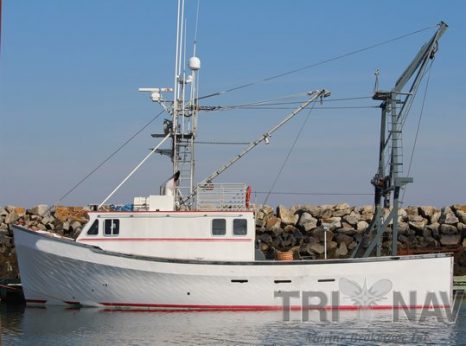
Athearn Marine Agency Boat of the Week: 49’11”x 24′ Dixon Lobster/Scalloper, 500HP Lugger, Nothern Lights – 14KW
Specifications, information and 15 photos click here Vessel very well maintained and clean. To see all the boats in this series, Click here 12:47
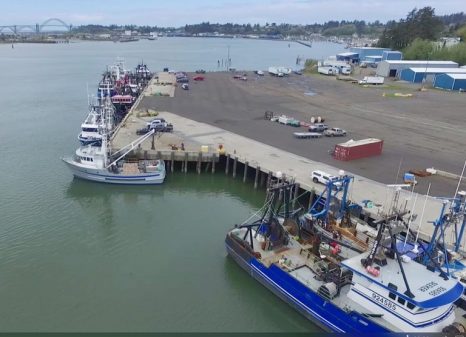
Newport’s fishing fleet lays it on the line…
The Port of Newport is home to a diversified commercial fishing industry. Well over 100 commercial fishing vessels are home-ported in Newport and many more transient vessels visit and utilize the Port’s facilities. Newport-based vessels participate in many fisheries and Newport is also home to many of Oregon’s Distant Water Fleet.,,, The International Terminal (IT) is a critical component to Newport’s commercial fishing success. The IT can accommodate large fishing vessels that do not fit at other port facilities. It is not unusual to see 12-15 large trawl vessels moored at the IT between November 1 and January 10th or between April 1 and May 15th. Crab and shrimp boats and trawlers also use the IT heavily to stage and switch gear throughout the year. click here to read the story 12:09

Sustained by the sea: Buying into a fishing legacy
Trae Lohse and Tracey Nuzzi, both fairly new to the commercial fishing industry, have very different fishing histories. They’re drawn to commercial fishing’s unconventional lifestyle, setting their sights on the waters of Prince William Sound each summer to support themselves and their families, as part of an industry that supports Alaska’s economy.,,, For most young adults beginning their careers, making an investment of $200,000 would be out of the question. But for those looking to get into the industry, this is pretty standard. They are well aware of the costs. The two biggest upfront costs are purchasing a commercial fishing boat and permit. click here to read the story 10:12
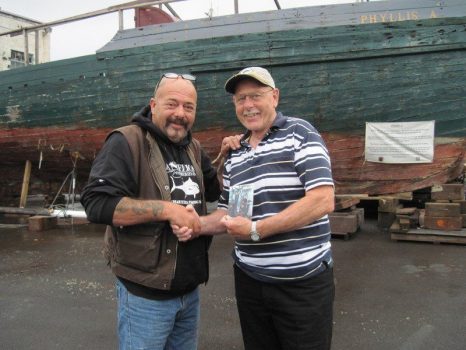
Wicked Tuna draws out tourists
Henry and Cheryl Klemmer of Oshkosh, Wisconsin, traveled nearly 1,200 miles to Gloucester this week with a dream of meeting a “Wicked Tuna” captain. They didn’t meet one. They met five.
“Oh gosh, it really brought a personal connection to the show,” said Henry Klemmer. “It brought reality into the living room.” The seventh season of the National Geographic Channel’s hit series is currently filming in Gloucester, and will air in 2018. Meanwhile, the fourth season of the spinoff “Wicked Tuna: Outer Banks” premieres Sunday at 10 p.m.. That show includes two captains from the original series, T.J. Ott of Hot Tuna and Tyler McLaughlin of the Pinwheel, who will fish for bluefin alongside a fleet of the South’s best fishermen. click here to read the story 08:54
Dominic LeBlanc pledges to ‘enshrine the owner-operator and fleet separation law’
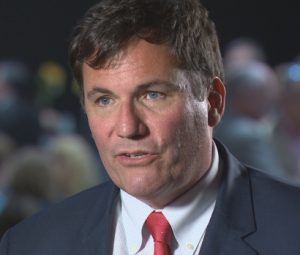 Federal Fisheries Minister Dominic LeBlanc told the Canadian Independent Fish Harvesters’ Federation he plans to make amendments to the Fisheries Act that will “enshrine the owner-operator and fleet separation law.” “This would mean that the minister would be able to create regulation under law to prohibit a fisherman from using a licence to enter a controlling agreement or other arrangements that are contrary to social and economic objectives that are beyond the spirit and intent of the owner-operator and fleet separation policies,” LeBlanc said. LeBlanc made the announcement during his keynote address at the annual Canadian Independent Fish Harvesters’ Federation meeting held in Chester, N.S., Tuesday. click here to read the story 08:21
Federal Fisheries Minister Dominic LeBlanc told the Canadian Independent Fish Harvesters’ Federation he plans to make amendments to the Fisheries Act that will “enshrine the owner-operator and fleet separation law.” “This would mean that the minister would be able to create regulation under law to prohibit a fisherman from using a licence to enter a controlling agreement or other arrangements that are contrary to social and economic objectives that are beyond the spirit and intent of the owner-operator and fleet separation policies,” LeBlanc said. LeBlanc made the announcement during his keynote address at the annual Canadian Independent Fish Harvesters’ Federation meeting held in Chester, N.S., Tuesday. click here to read the story 08:21




































